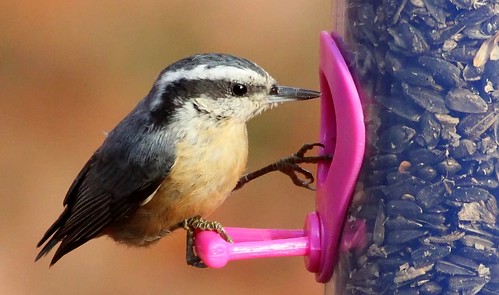If you don't have your feeders out yet, get to it, because this winter is shaping up to be a spectacular one. This year is being deemed a finch "superflight". What exactly does that mean? A "superflight" means a mass migration of many species of birds to areas where they are not usually seen. In this case we are talking about many species of Canadian birds flying south to parts of the U.S. that are not normally part of their winter range. Some of these species are known as "irruptive" species, like the Pine Siskin, that have erratic movements in winter as they follow food sources. So the "superflight" can be thought of as a mass "irruption", with many birds on the move in search of food.
The reason for this winter's superflight is due to the drought and mass nut and pine cone failure in Canada. If you remember here in Louisville a couple years ago, we had a late frost in May that killed all the flowers on the trees, which led to a mass failure of the nut crop. That year there were virtually no acrons, beech nuts, or hickory to be found. What happened in the drought in Canada this year is similar. Without their usual food crops to be found, birds are venturing far and wide to find food, maybe to your backyard. Which is why you should get your feeders up ASAP if you haven't already, because the flight has started and there are already interesting Canadian birds being reported in Louisville and the surrounding area. Learn more about the superflight on the ebird blog.
Some of the birds we might see this year are: Red-breasted Nuthatches, Pine Siskins, both species of crossbills, Common Redpolls, even possibly Evening Grosbeaks and Bohemian Waxwings. If you've never heard of any of these birds it's probably because they aren't found around here too often. Putting your feeders out now and you may attract these once in decades visitors.
So what should you do if you see one of these species (or any species for that matter)? Report it! And how do you do that? With eBird of course! It allows you to record when and where you see different species and also lets you view other people's observations. Check out this map of White-throated Sparrows seen in Louisville this year. You can type in different species to see where they are being seen anywhere in the country. The more people that report, the better the data becomes, which scientists use to track and monitor bird populations. There is no doubt that eBird reports this winter will allow scientist to track the winter superflight like never before.



 10:46 AM
10:46 AM



 Posted in:
Posted in: 




0 comments:
Post a Comment